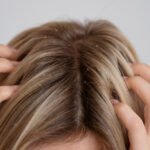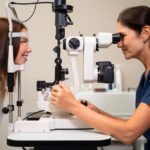In the pursuit of luscious locks and a vibrant mane, understanding the nuanced difference between hair fall and hair breakage becomes imperative. Each strand has its story to tell, and decoding these tales requires a thoughtful exploration of the diverse factors influencing our tresses.
Welcome to the realm of “Hair Fall and Hair Breakage: Know the Difference.” As we embark on this journey, we will unravel the mysteries behind the shedding of strands, discerning between the natural cycle of hair fall and the often-overlooked issue of breakage. So, fasten your seatbelts as we navigate through the intricate landscape of hair health, offering insights, tips, and remedies to foster a crowning glory that truly deserves to shine. Let’s dive deep into the roots of this hairy predicament and emerge with a newfound understanding of how to nurture and protect our precious strands.
Hair Fall:
Hair fall refers to the natural shedding of hair at the end of its life cycle. On average, a person can lose around 50 to 100 hairs per day. Factors contributing to hair fall include:
Genetics:
Family history plays a significant role in determining the likelihood of hair fall.
Hormonal Changes:
Pregnancy, childbirth, menopause, and other hormonal fluctuations can impact hair shedding.
Medical Conditions:
Certain health conditions, such as thyroid disorders or alopecia, can contribute to excessive hair fall.
Stress:
Physical or emotional stress can lead to a condition called telogen effluvium, causing increased hair shedding.
Prevention and Treatment:
- Maintain a balanced diet rich in vitamins and minerals.
- Manage stress through relaxation techniques.
- Use mild shampoos and conditioners suitable for your hair type.
- Consult a healthcare professional for underlying health concerns.
Hair Breakage:
Hair breakage occurs when the hair shaft weakens and snaps, leading to uneven lengths and frayed ends. Common causes of hair breakage include:
Excessive Styling:
Regular use of heat styling tools, chemical treatments, and tight hairstyles can weaken the hair shaft.
Lack of Moisture:
Dry and brittle hair is more prone to breakage. Insufficient moisture can result from overwashing or using harsh products.
Poor Hair Care Practices:
Rough handling, frequent brushing, or using the wrong hair accessories can contribute to breakage.
Nutrient Deficiency:
A lack of essential nutrients, such as protein and biotin, can weaken hair strands.
Prevention and Treatment:
- Limit the use of heat styling tools and opt for protective hairstyles.
- Use a moisturizing and strengthening conditioner regularly.
- Trim hair regularly to remove split ends.
- Consume a well-balanced diet with a focus on hair-friendly nutrients.
Understanding the nuances between hair fall and hair breakage empowers individuals to adopt targeted approaches in their hair care routines. By addressing the root causes and implementing preventive measures, one can promote healthier, more resilient hair.
Image credits : Image by Freepik








No Comment! Be the first one.